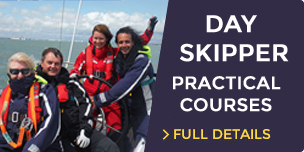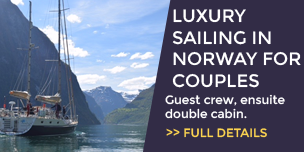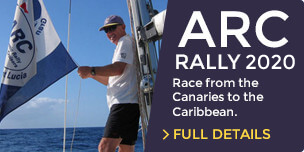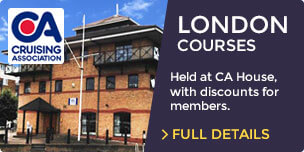The Day The Hurricane Came
3,915 views | November 12th, 2019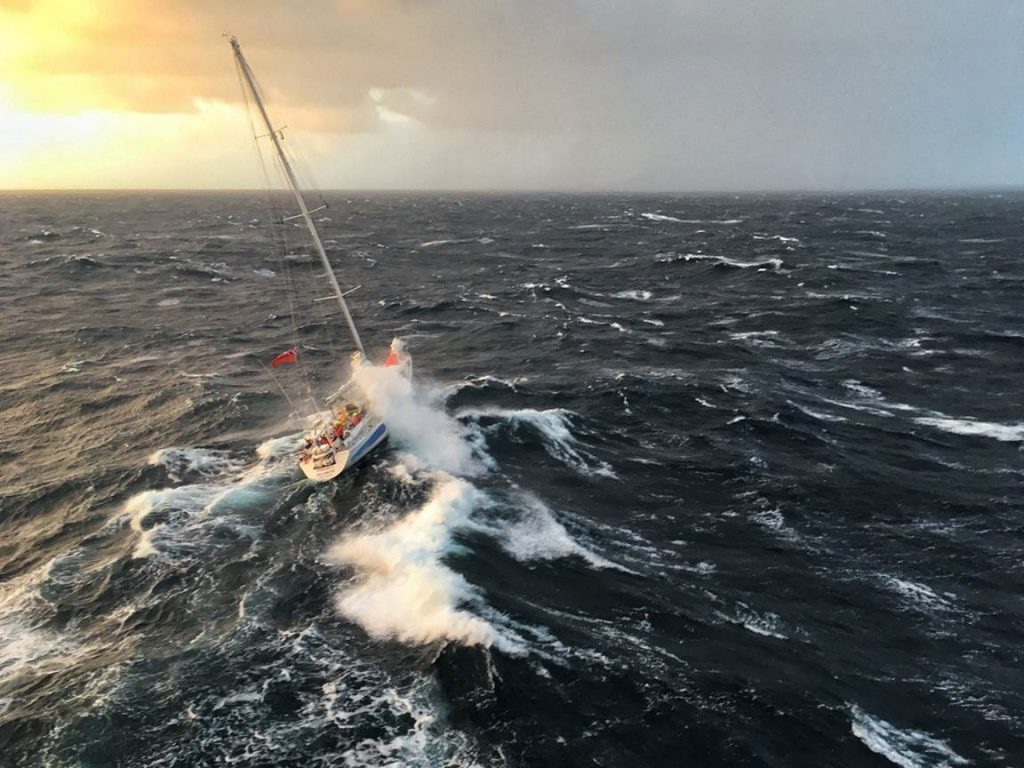
Hurricane Pablo
Hurricane Pablo started off as an innocuous looking low pressure system on 23 October that no one was paying much attention to.
As this system began to develop, our annual voyage from Portsmouth to the Canaries was looking to cross the Bay of Biscay. The plan was to cross ahead of the incoming system, but as it developed into a hurricane it sped up and caught our Challenger 72.
The day the Hurricane came
When Eliza Doolittle enunciated ‘hurricanes hardly ever happen in Herefordshire, Hertfordshire and Hampshire’ it follows that sometimes they do. And, during our passage across the Bay of Biscay, the hurricane did happen and with a vengeance.
A New Record
Hurricane Pablo was the first storm of the season to travel from west to east growing from a severe storm into a named Force 12 hurricane as each day passed. We knew that we were heading for bad weather, but certainly not a hurricane, and we expected that we could be in front of the bad weather. In the event the storm grew and travelled faster than predicted and finally developed into a hurricane, with us passing within 400 miles of its eye.
There were options, albeit they were limited. As we passed Ushant we considered that continuing into deep water to avoid the steep breaking waves off the continental shelf seemed to be the best option – even though this meant beating into wind and waves for a very long time. In the end we spent 3 days crossing Biscay, all in very severe weather and were subjected to 8 hours of hurricane conditions.
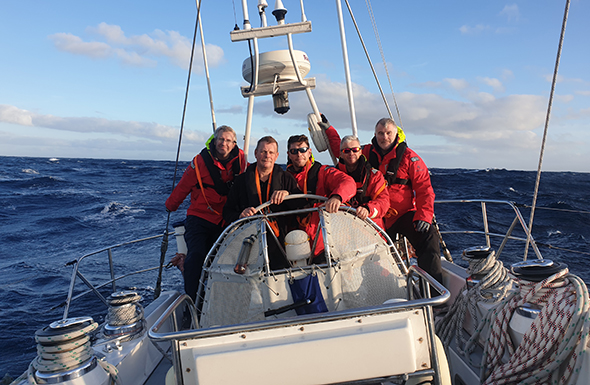
On Watch
What It’s Like To Be In A Hurricane
So, what did it feel like? Firstly, we felt safe, the boat could take it and, with the exception of a jib sheet parting in an especially severe gust and a bent handrail from breaking waves nothing untoward happened. Our only real concern was how long we could each take the conditions and keep functioning in such an arduous situation.
From the beginning we were wet, despite having the best foul weather gear. Spray and rain had a way of finding its way into every opening. Our sea boots filled with water because so much was breaking onto and swilling around the deck.
Maintaining balance and even a seated position in the cockpit was a struggle, the force of a breaking wave carried several of us away at various times. Only our safety harness kept us within the boat. Many of us ended up with a collection of bruises but no bones were broken or blood spilt.
Changing Watches
The implication of this for watch changes was that the companionway and wet store were always saturated. Changing into already wet clothing (boots in particular) took far longer than might ever be expected.
Going on deck to relieve the previous watch was a logistical and time consuming exercise. Then, during the watch, sitting hunched to take whatever shelter was possible, was an endurance. Changing the helm in a pitching boat is never easy but at night with waves constantly breaking over the boat again took far longer than might ever be expected.
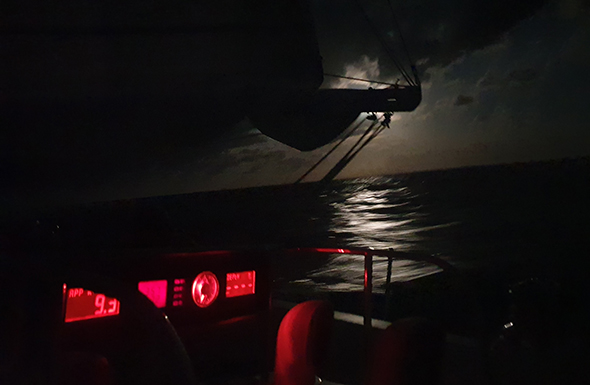
View from the helm at night
At The Helm In F12 Conditions
At the wheel the driving rain and spray stung the eyeballs such that vision was momentarily lost. Continuous bracing of the body and legs to maintain a position at the wheel plus the intense concentration required upon the instruments, especially the Windex, also took its toll. A 20-minute helm duty seemed like an eternity. Fortunately we held the same course (to windward) throughout so that we had no need to tack until the very end when we headed into La Coruna.
What About Below Deck?
Surprisingly, below deck, everything continued as normal. Meals and drinks were produced to time and quality at regular intervals throughout, although few had any appetite. Fortunately the seats had broken away from each toilet bowl at the beginning of the storm, so those who needed to crouch to vomit had no worries about the seat landing on their head and it made cleaning up much easier afterwards.
However, it’s worth saying that it wasn’t all doom and gloom there were some really good moments. The colour of the sea under the spume was a beautiful turquoise.
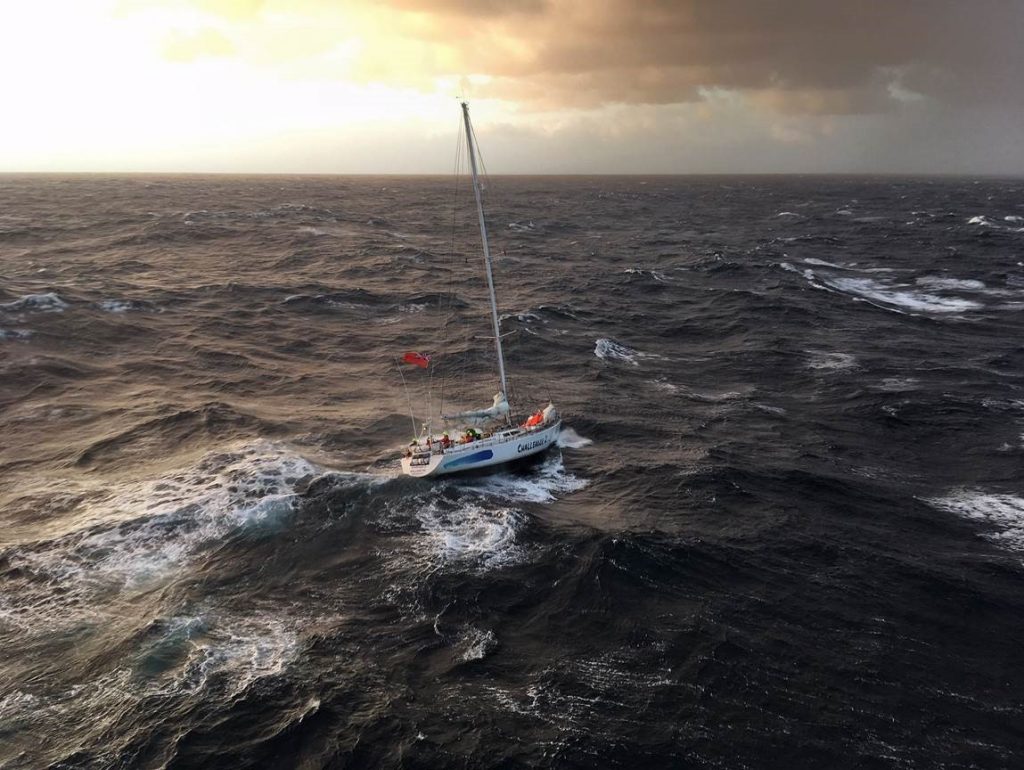
View from the Spanish Rescue helicopter
Safety Systems Tested
The Personal Locator Beacons that were set off by the breaking waves were noticed and acted upon by the Spanish Search & Rescue Authority. They even dispatched a helicopter as a training exercise to check our status. The systems that we put so much faith in but rarely have the opportunity to test worked every time; very reassuring. An unexpected, but welcome by-product being that they took some stunning aerial photos of us during the storm which they sent as a courtesy.
Hurricanes Can Be Weathered
Was it frightening? No, but it was horrible. Were we dispirited? No, but it was hard to keep a positive frame of mind. Were we at the end of our tether? No, but we were very tired. Would we do it again? No, but it showed that it can be done. If properly briefed and prepared it is within the capacity of even those who have limited sailing experience. Did we ever occasionally believe that this might be ‘our last moment’? No, but we did wish we had undertaken far more severe weather and safety at sea training.
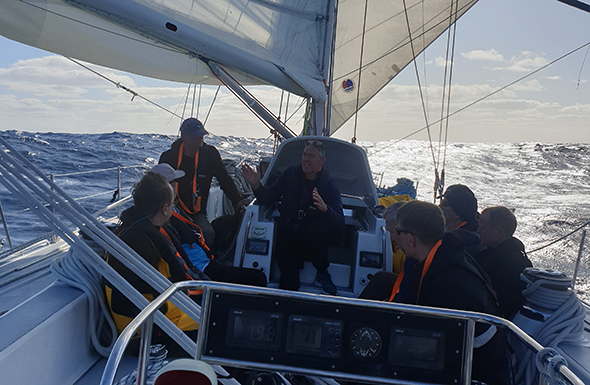
A proper briefing is essential
Reflecting upon our experience over the following days we each found nuggets of learning that will serve us well in the future. Importantly, it broke the taboo of never putting to sea when a white horse is spotted. Plainly it’s always better to be tucked up in bed at home, or in the pub, when the weather is foul. But, hurricanes can be weathered if you are properly prepared.
Ian Jenkinson (on behalf of the crew of Challenger 2) Carsington Sailing Club Derbyshire
More blogs about this Atlantic Adventure can be read here: Portsmouth to Gran Canaria
Book Your Own Atlantic Adventure
If this blog has inspired you to voyage across an ocean then start speaking to the team in the office. They can assess which Atlantic voyage will be good for you and what course would take you to that level.
Fill in the form below and they will call you back.
Posted by: First Class Sailing

